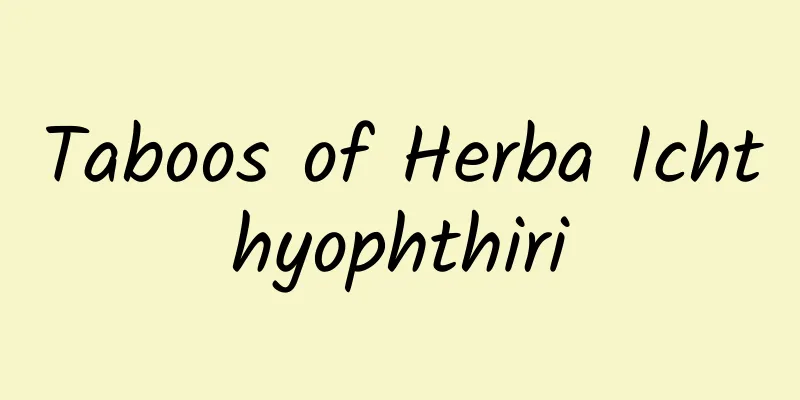How to tell the authenticity of saffron

|
Many friends may not know about saffron because they rarely come into contact with it in their daily lives. In fact, saffron is also a kind of Chinese medicinal material. It has many benefits for the human body, such as promoting blood circulation and removing blood stasis, treating anxiety and depression, treating amenorrhea in women and so on. There are actually many counterfeit saffron products sold in the market, so everyone must know how to distinguish the authenticity of saffron. 1. Observation method to distinguish the authenticity of saffron The part of saffron used as medicine is the completely red part at the top of the stigma of the pistil of the saffron flower. After picking and drying, it becomes red filaments with trumpet-shaped swells at the top. Through observation, you can identify fake products that are made with safflower and fake products that are dyed and shredded with edible glue. From the comparison pictures of saffron and saffron above, we can clearly see the difference between saffron and saffron. Saffron is a bunch of filaments, while saffron is a bunch of small flowers. It is very easy to distinguish saffron from saffron by observation. The observation method can also be used to identify fake edible glue that is dyed and shredded, but it requires a certain amount of experience and is somewhat difficult for ordinary users. The fake dyed and shredded products are cut with tools instead of growing naturally, so there are obvious cutting marks on the edges. Although the top is cut thicker, there is no trumpet-shaped expansion. The natural flare at the top of the filament can be seen in the filament detail picture above. Experienced friends can use the observation method to identify fake edible glue dyed and shredded products, while unfamiliar friends can continue to use the following soaking method for identification. 2. Soaking in water to identify the authenticity of saffron The soaking method is mainly used to identify dyed fake saffron. Although saffron filaments are red, their active ingredients are yellow when the concentration is relatively low. The dyed fakes can only be dyed red, and they turn red when soaked in water. The method of identifying saffron by soaking in water is to take a few sample saffron filaments, put them in a white porcelain bowl filled with hot water, and then observe the color change of the water. Genuine saffron can be seen releasing obvious yellow active ingredients from around the filaments, eventually dyeing the water golden yellow. The dyed fakes tinted the water a light red. 3. How to distinguish the authenticity of saffron by wiping method The wiping method is also mainly used to identify dyed fake saffron. The operation method of identifying saffron by wiping method is to take a sample of saffron filaments, then rub them vigorously on white paper, and then look at the color of the wiping marks. The marks of real saffron appear yellow or orange, and the wiping marks of dyed fake saffron are red. If the mark is not easy to show, you can dip the filament in water and then wipe it. 4. Pressing method to identify the authenticity of saffron The pressing method is mainly used to identify fake saffron that has been soaked in oil and gained weight. If the saffron looks moist to the touch and has an oily sheen, you can use the pressure method to identify it. The method of identifying saffron by the pressing method is to take a small amount of sample saffron, place it between two layers of paper, press it hard, and then observe whether there is any oil stain on the paper. If there are oil stains, it means that the saffron is fake and has been soaked in oil to increase its weight. There are relatively few fake saffron soaked in oil on the market, and it is easy to identify by its characteristics such as being wet, oily, and having oil stains when pressed. 5. Iodine method to distinguish the authenticity of saffron The iodine method is mainly used to identify fake saffron made from starch-containing raw materials. This method has certain limitations. It can only identify fake saffron made from starch-containing raw materials, but cannot identify fake saffron that does not contain starch. The principle of using iodine to identify saffron is that starch turns blue when it comes into contact with iodine. The iodine method of identifying saffron is to drop iodine on the sample filaments. If it turns blue, it means that it is fake saffron made with starch. If it does not turn blue, it cannot be confirmed to be authentic. 6. Concentrated sulfuric acid method to identify the authenticity of saffron The concentrated sulfuric acid method is mainly used to identify fake saffron from non-plant sources. This method also has great limitations and can only identify fake saffron made from non-plant tissues, such as plastic threads. The principle of using concentrated sulfuric acid to identify saffron is that concentrated sulfuric acid can carbonize plant tissues. The method of identifying saffron using the concentrated sulfuric acid method is to drop concentrated sulfuric acid onto the sample filaments. If it is not carbonized, it means that it is fake saffron made from non-plant sources. If it is carbonized, it cannot be confirmed to be authentic. The above 6 methods for identifying the authenticity of saffron have different levels of difficulty and operability. Generally, only the observation method and the soaking method can be used to identify the authenticity of saffron. It is also recommended that you only use these two methods. The iodine method and concentrated sulfuric acid method have certain limitations and dangers, so they are only suitable for laboratory users. |
<<: The efficacy of pomegranate flower soaking in water
>>: Can I take Qingkailing granules during breastfeeding?
Recommend
The efficacy and function of horn snail shell
Traditional Chinese medicine is very effective in...
How long does it take for a fetus to have cerebral palsy if it is lack of oxygen?
There are many causes of cerebral palsy, one of t...
5,000 years ago, there were three-story buildings here!
About 5,000 years ago, the middle reaches of the ...
How to eat raw Rehmannia
We consume the medicinal herb Rehmannia glutinosa...
The efficacy and function of Mirabilis jalapa leaves
The traditional Chinese medicine Mirabilis jalapa...
The efficacy and function of Chenopodium album[Picture]
The Chinese medicinal material, Chenopodium album...
The efficacy and function of Chinese toon bark
The world is full of wonders, and Chinese medicin...
The efficacy and function of peach stem white peel
Peach stem white peel is a kind of Chinese herbal...
Its selenium content is 41.7 times that of an apple! Fruit cores are also very nutritious, but unfortunately many people throw them away...
Jackfruit, have you eaten it this year? Many peop...
Effects of Atractylodes
Atractylodes is a common traditional Chinese medi...
HXMT Telescope Satellite——The Smartest "Eyes" in Space
Recently, my country's Insight-HXMT team disc...
ID card "demagnetized"? The phone is not to blame!
Audit expert: Zheng Yuanpan, professor at Zhengzh...
The efficacy and function of camphor seeds
Camphor seed is a common type of traditional Chin...









